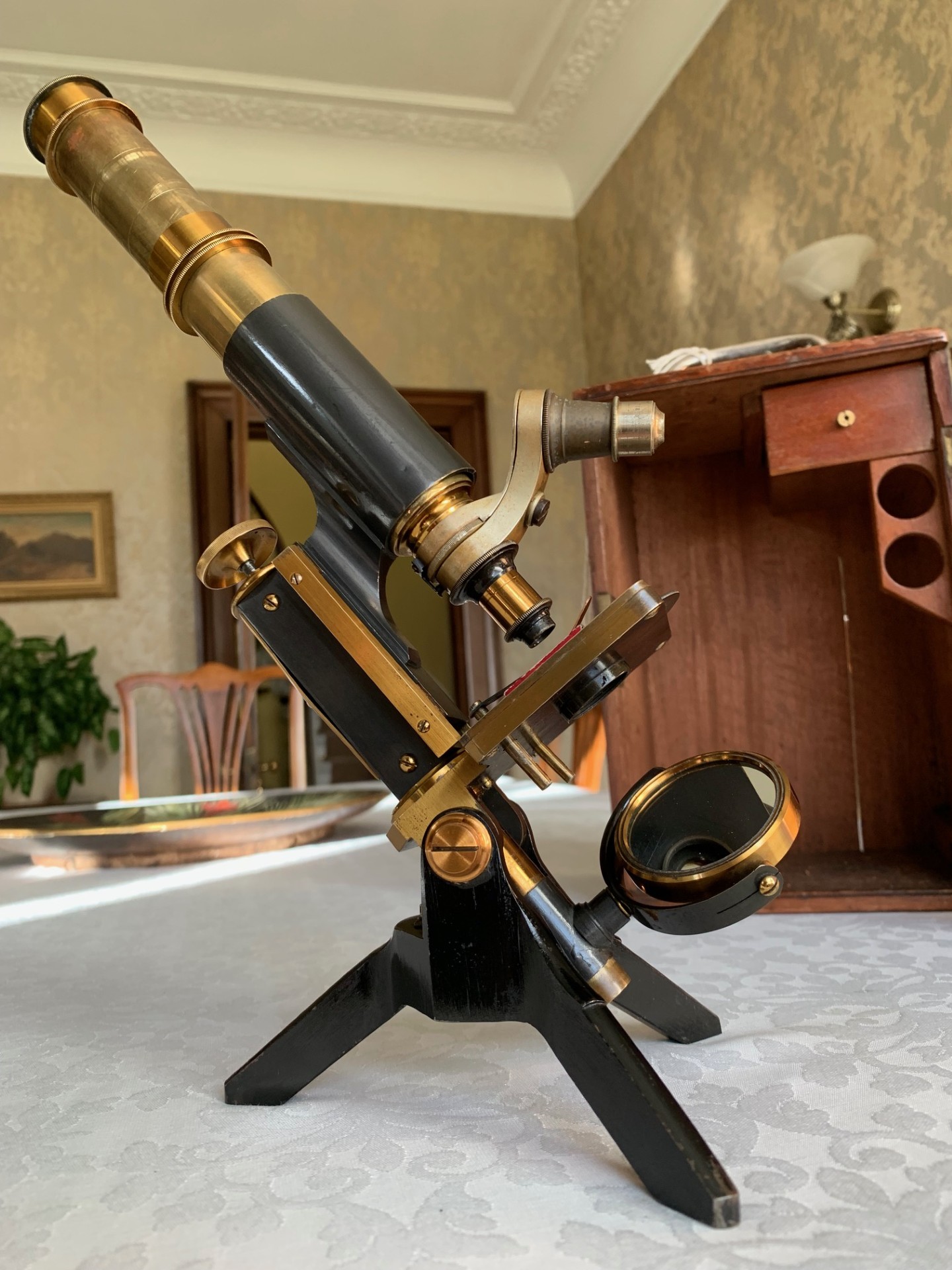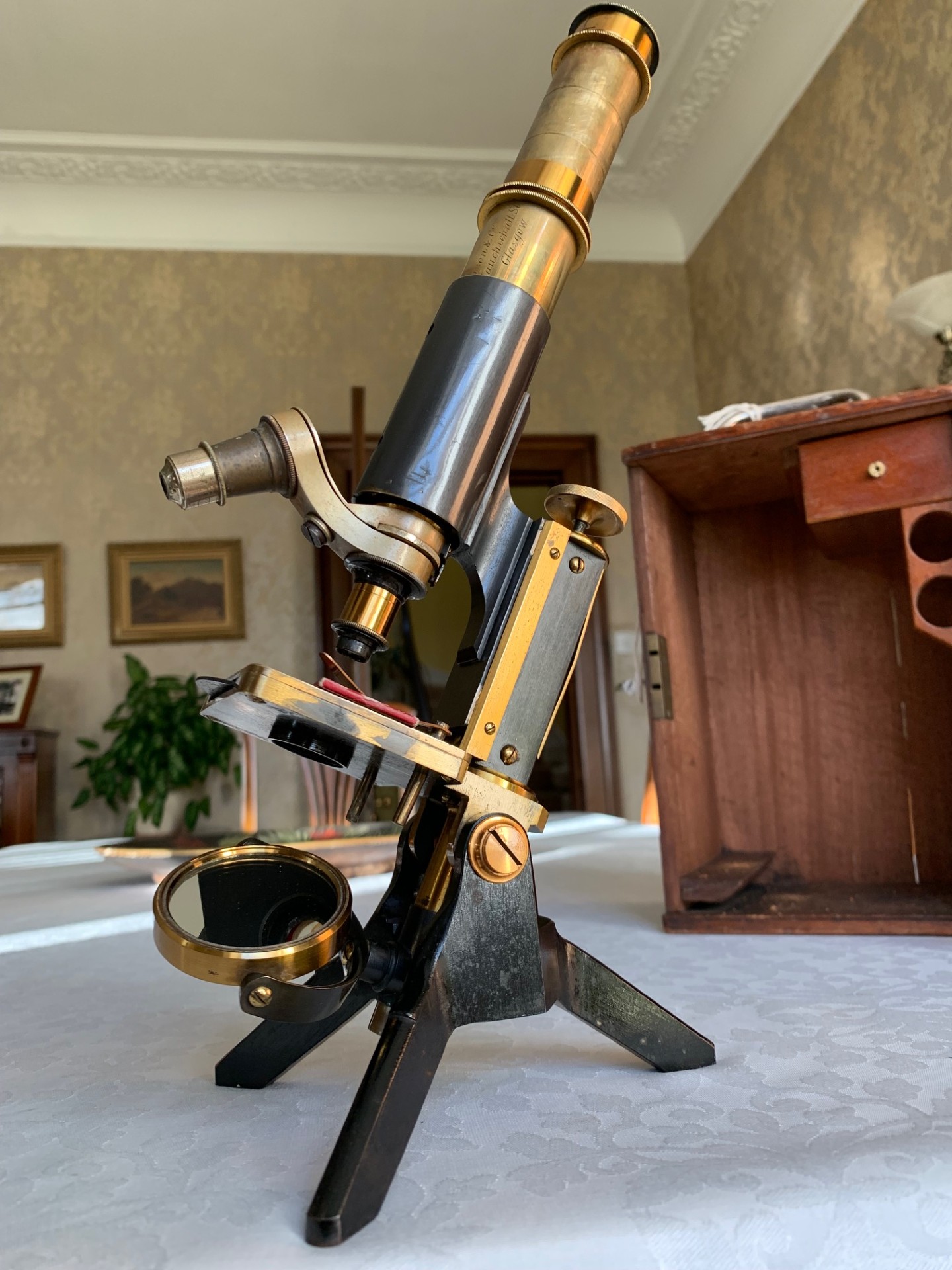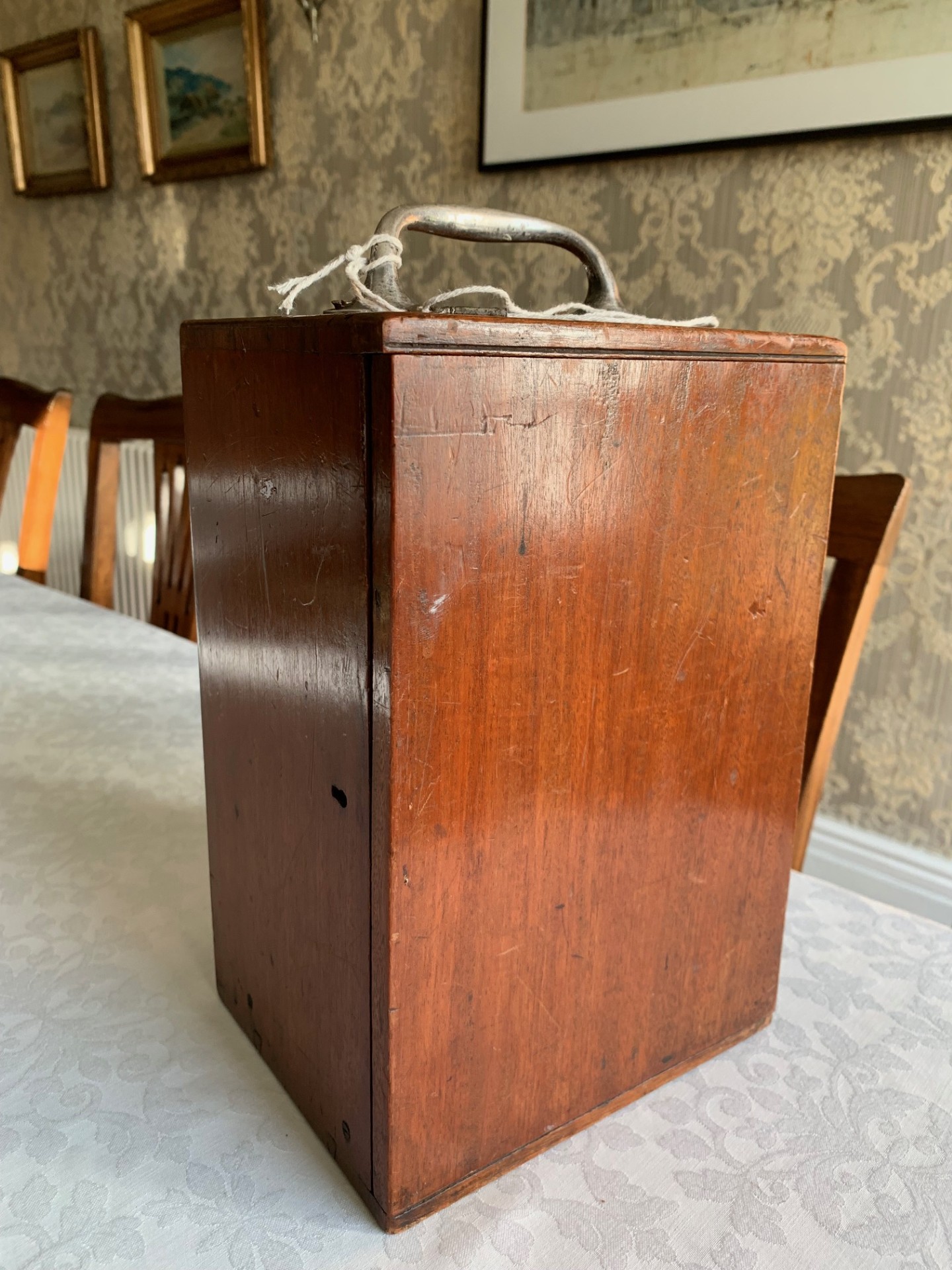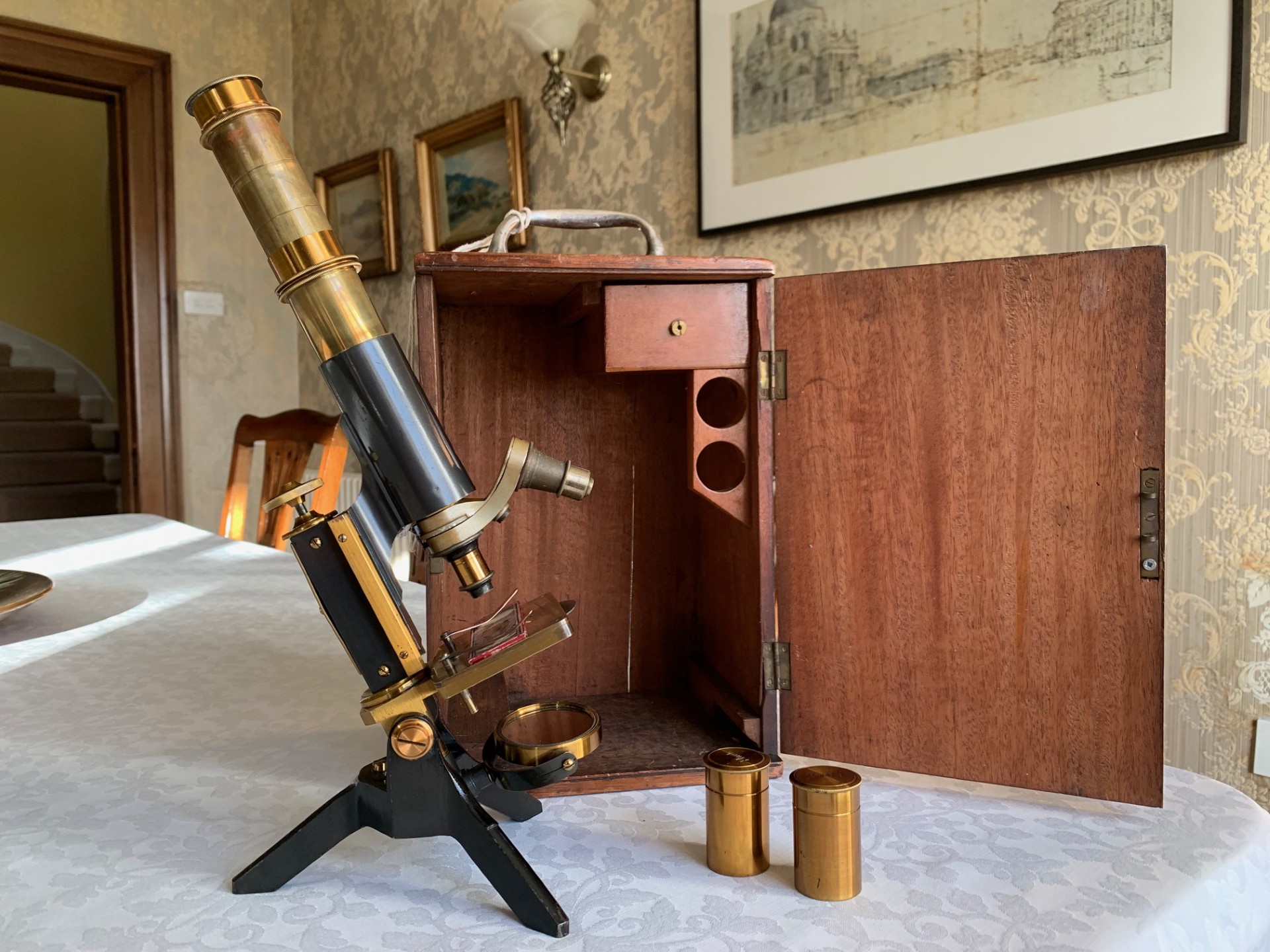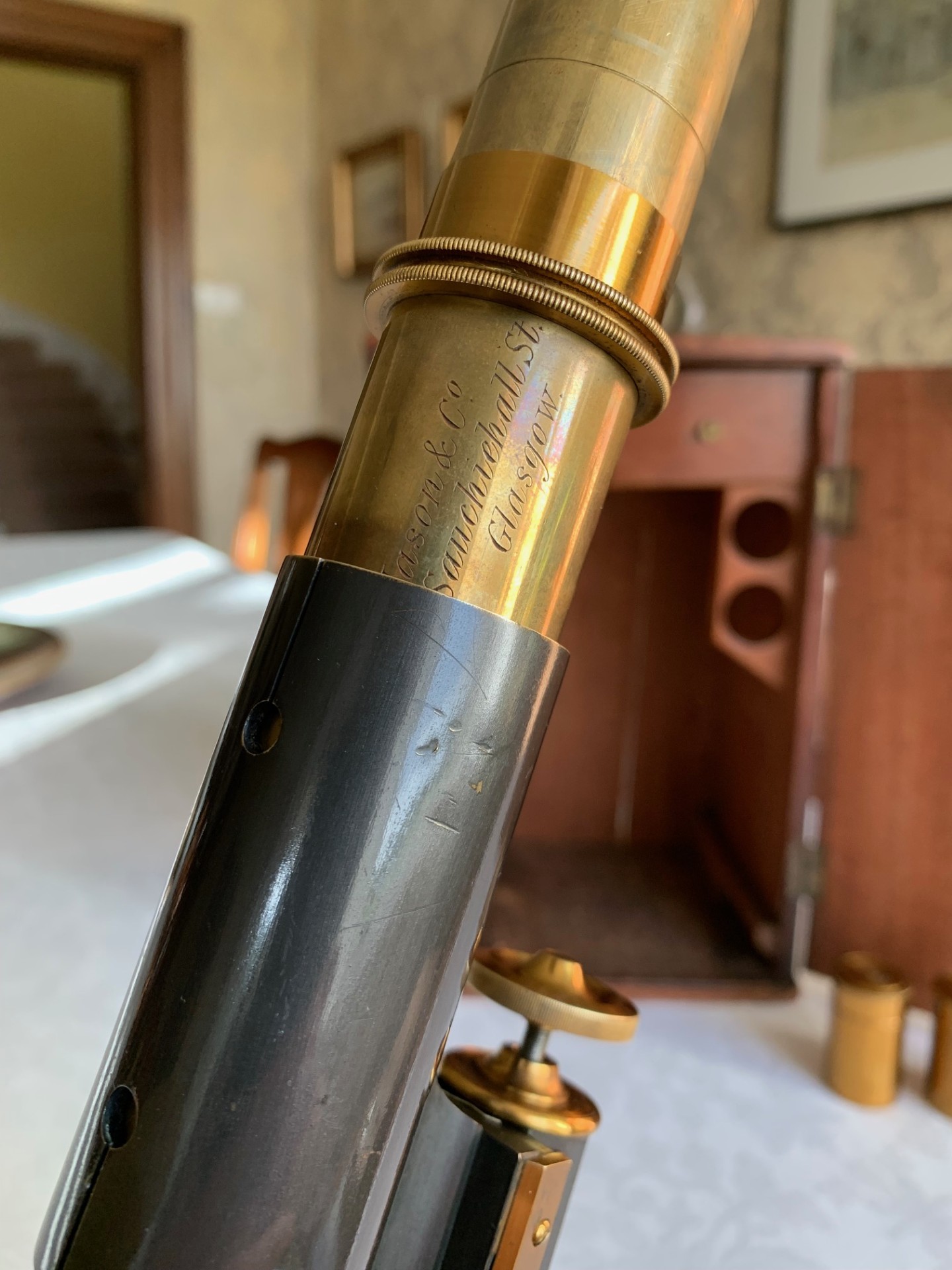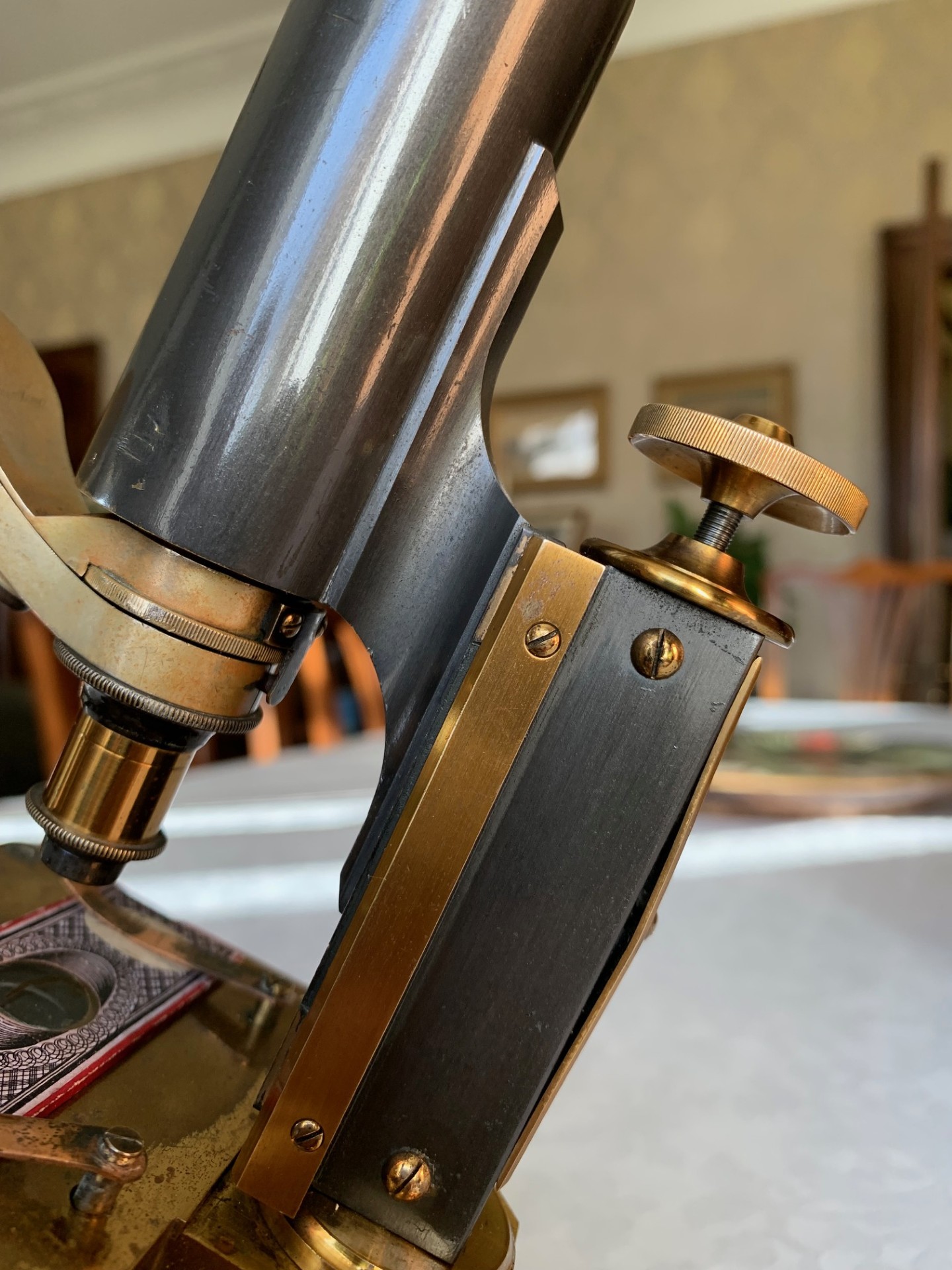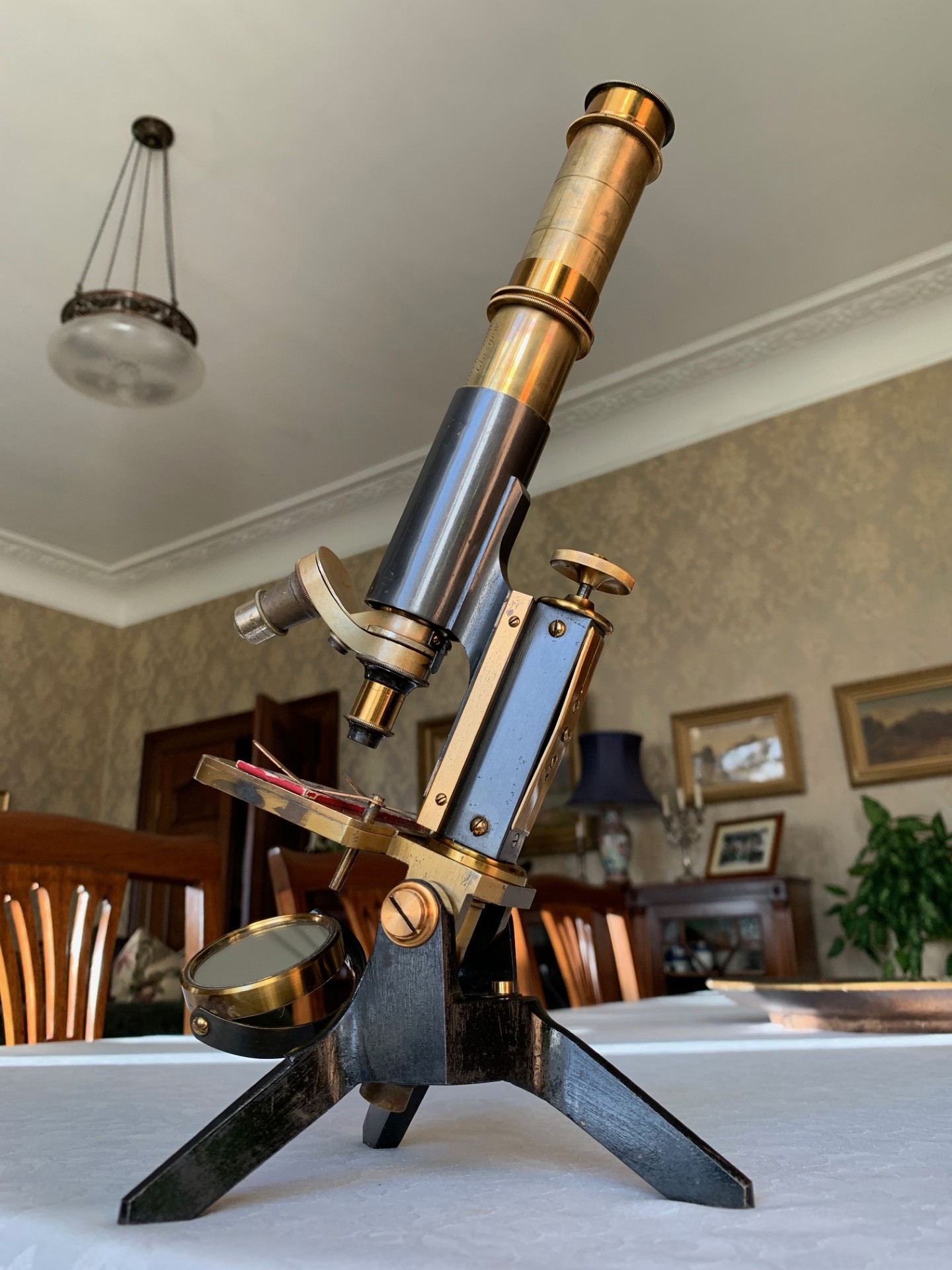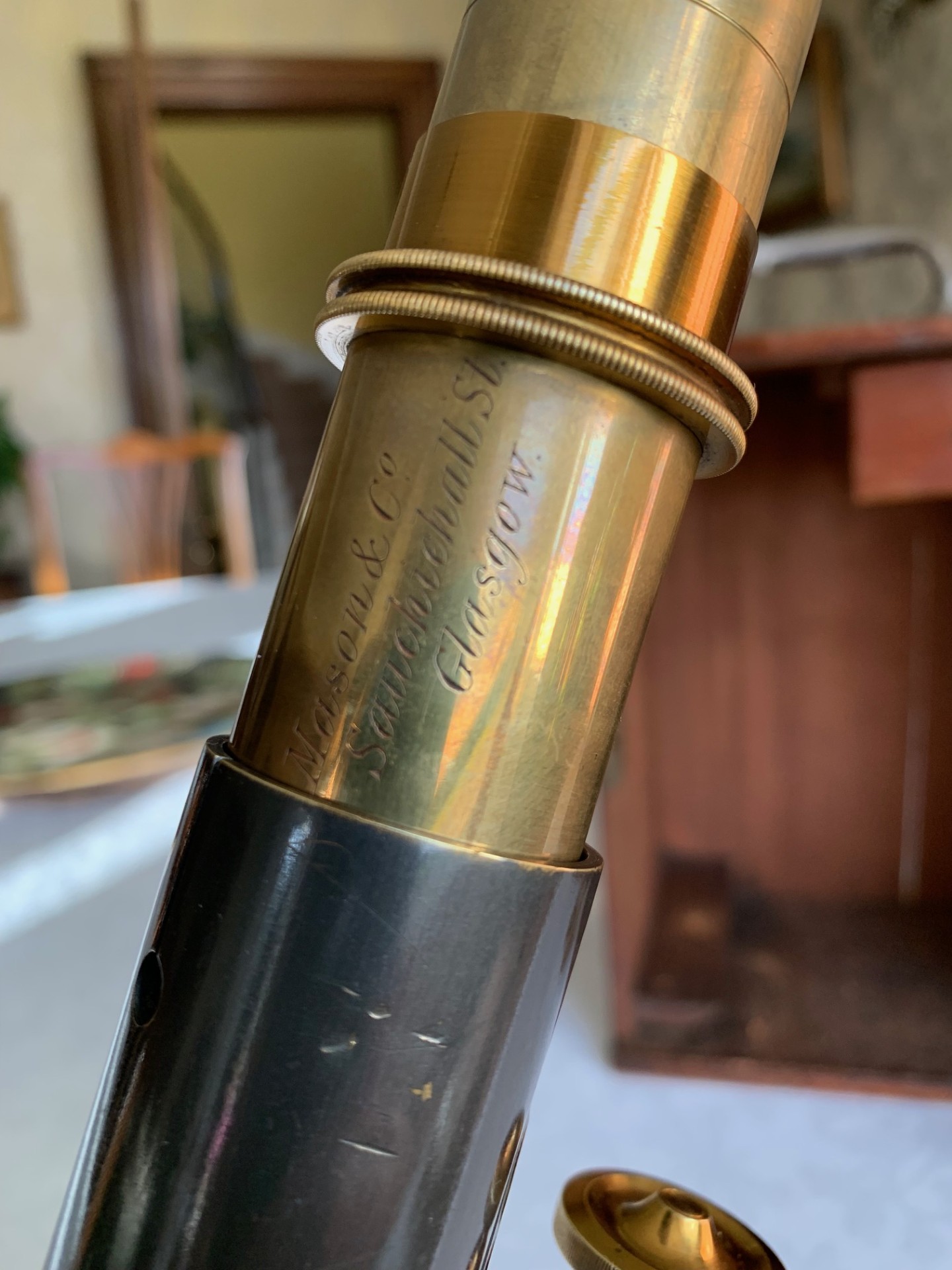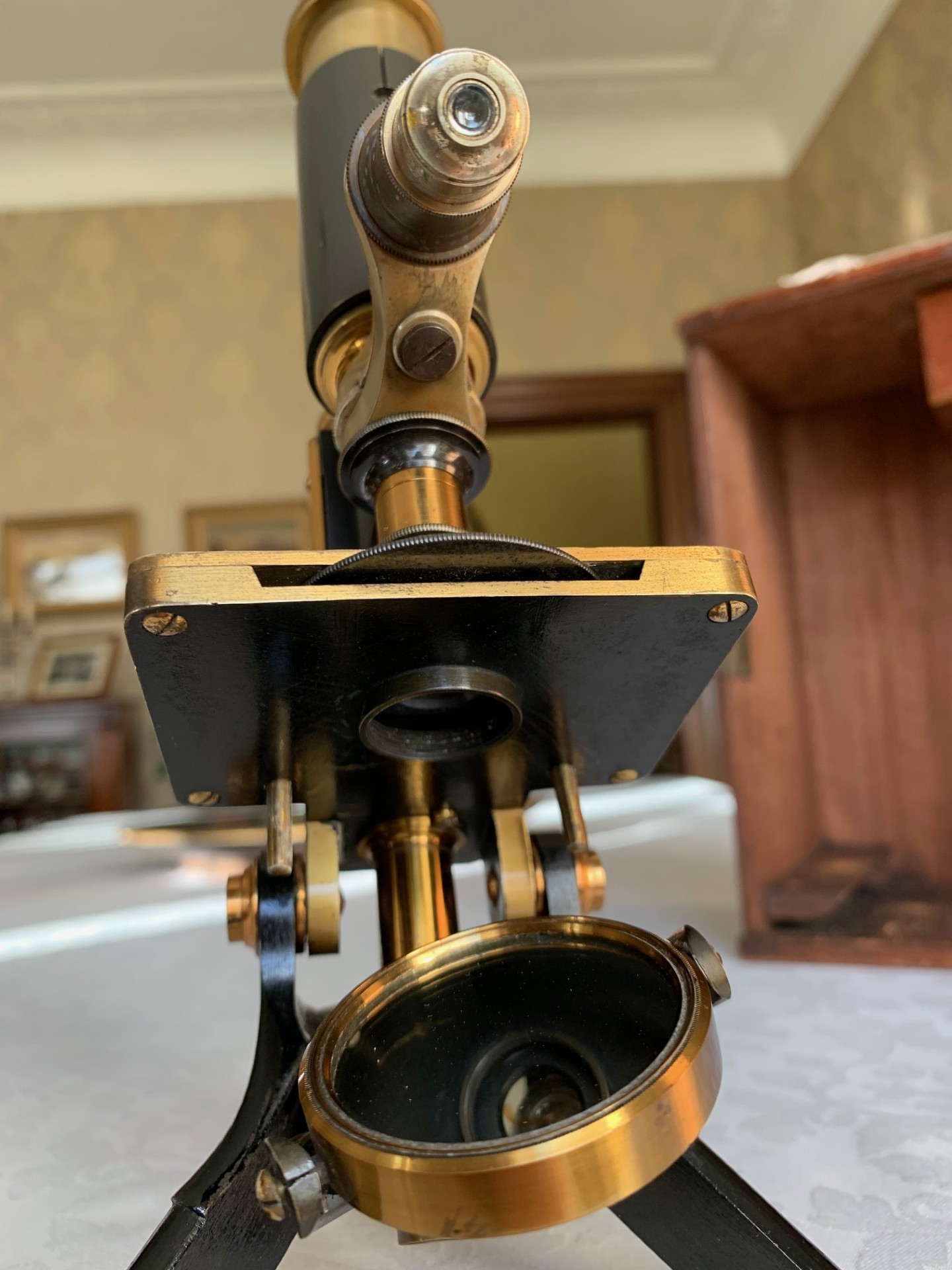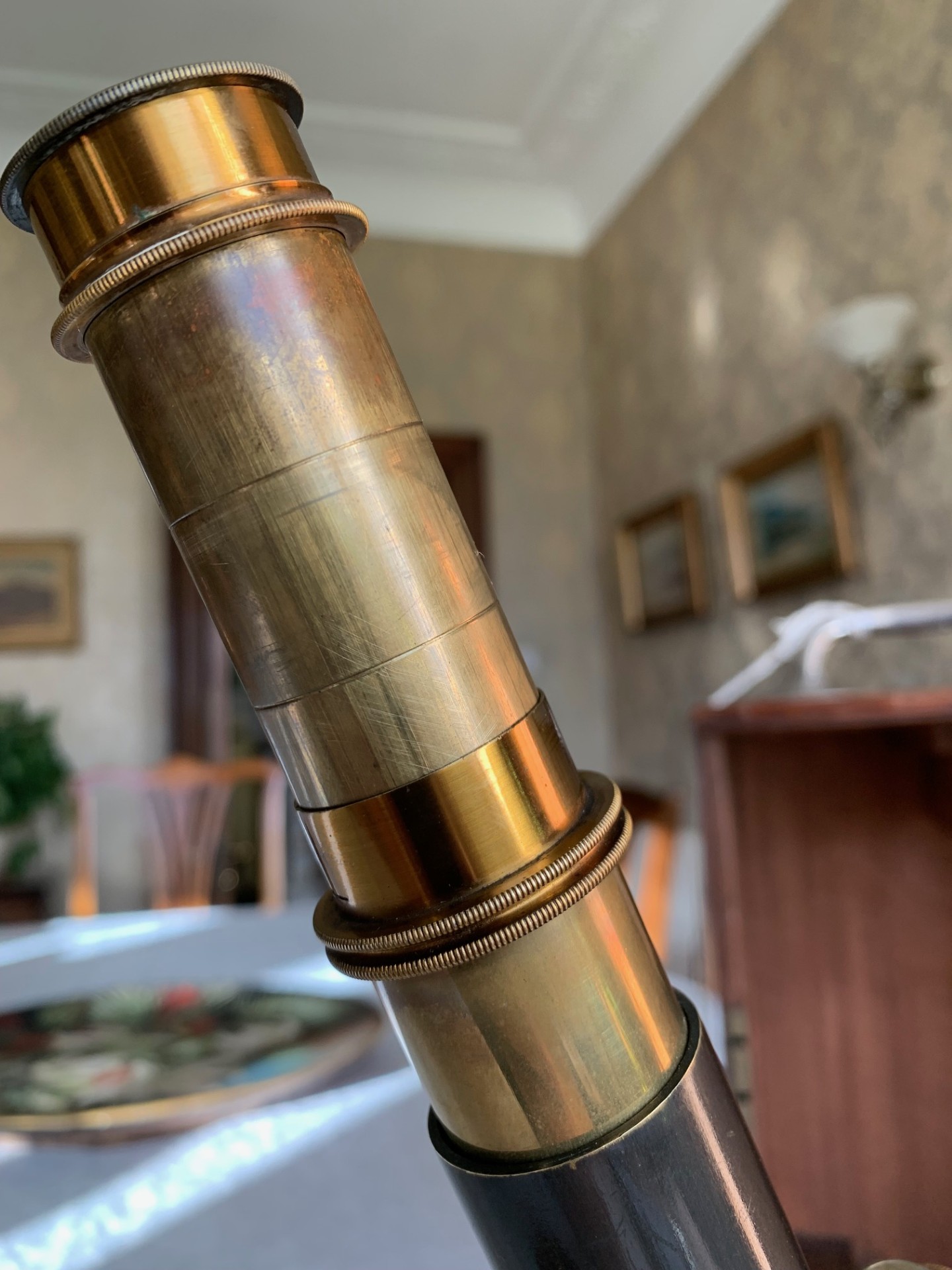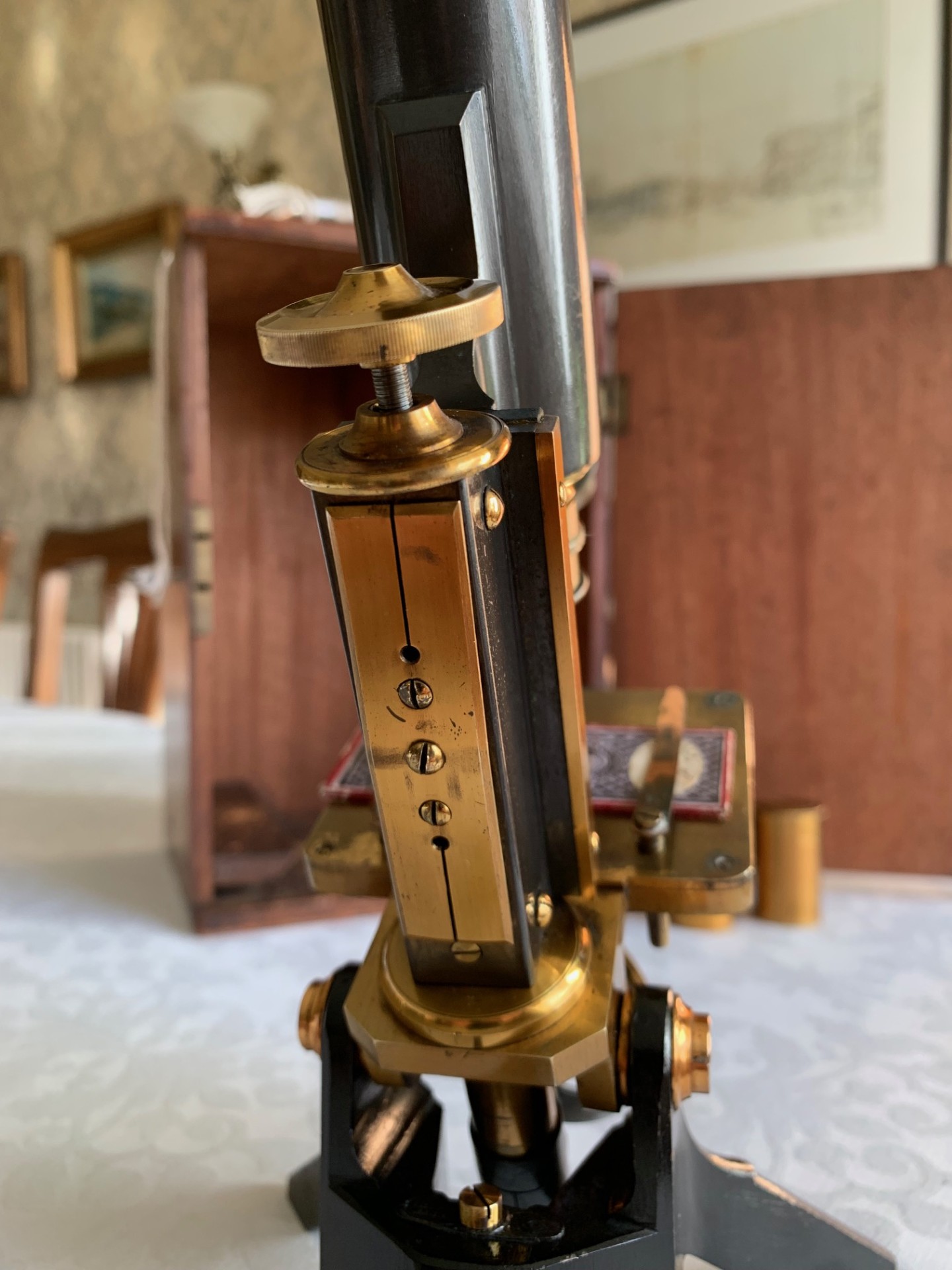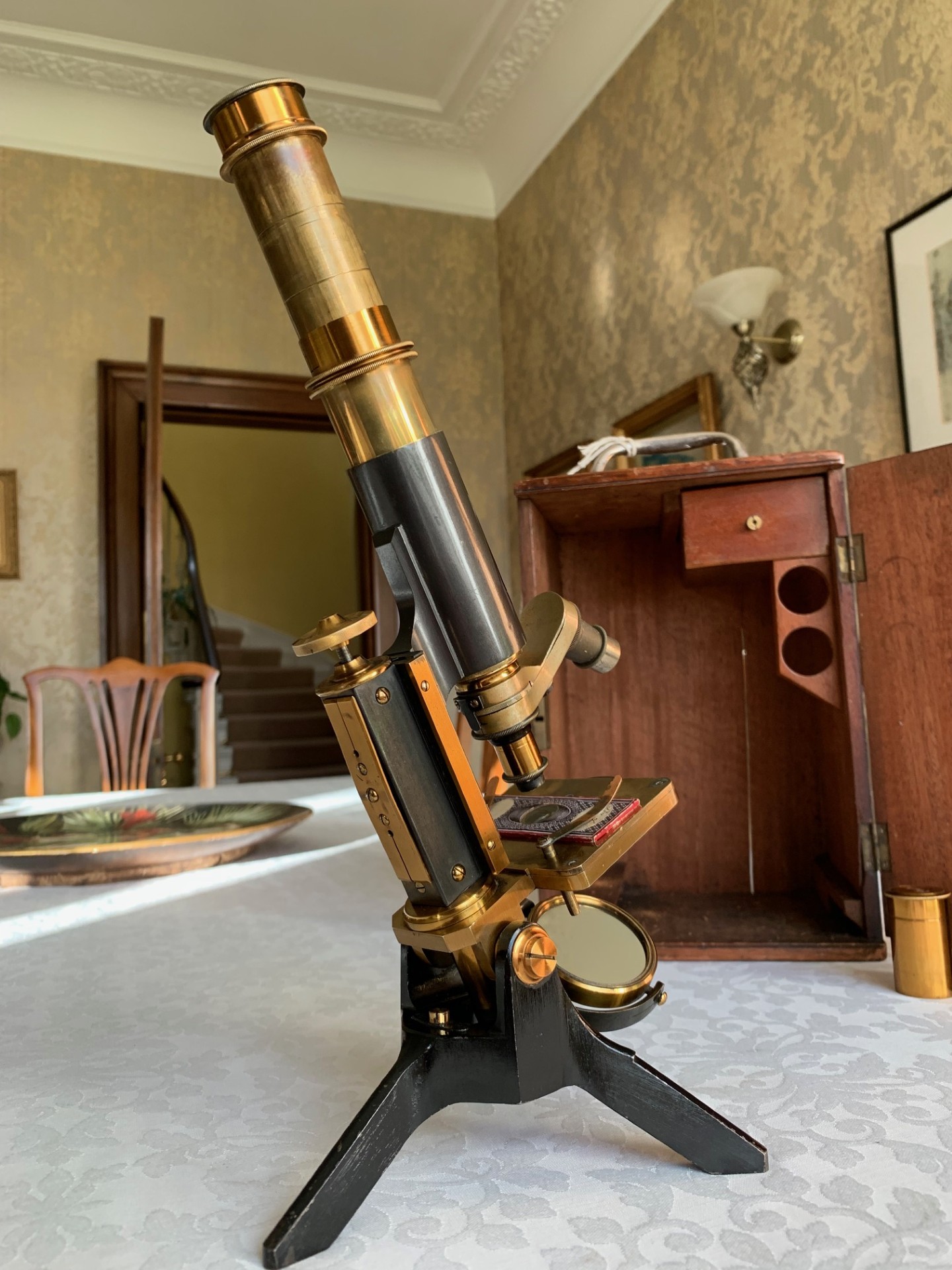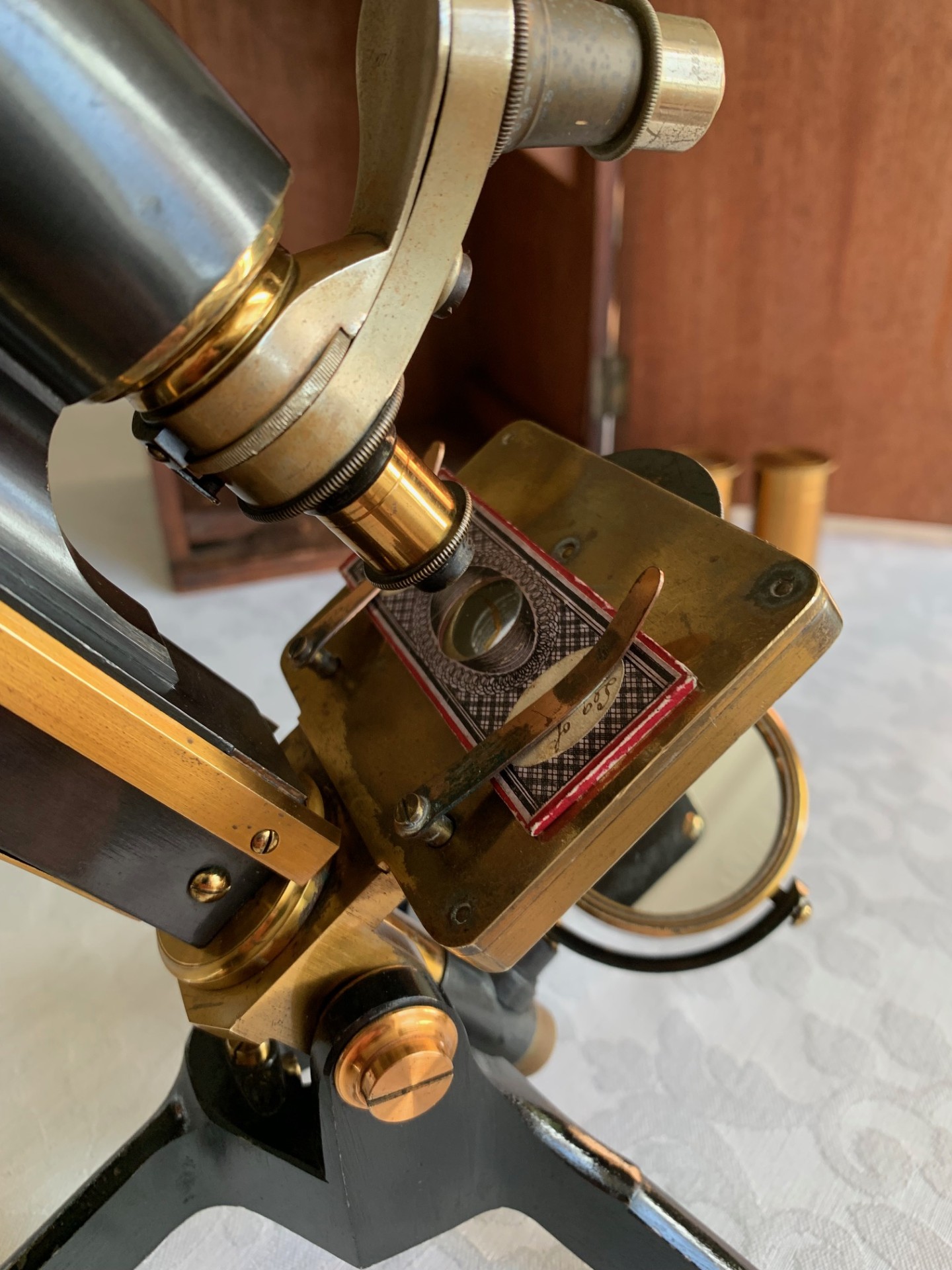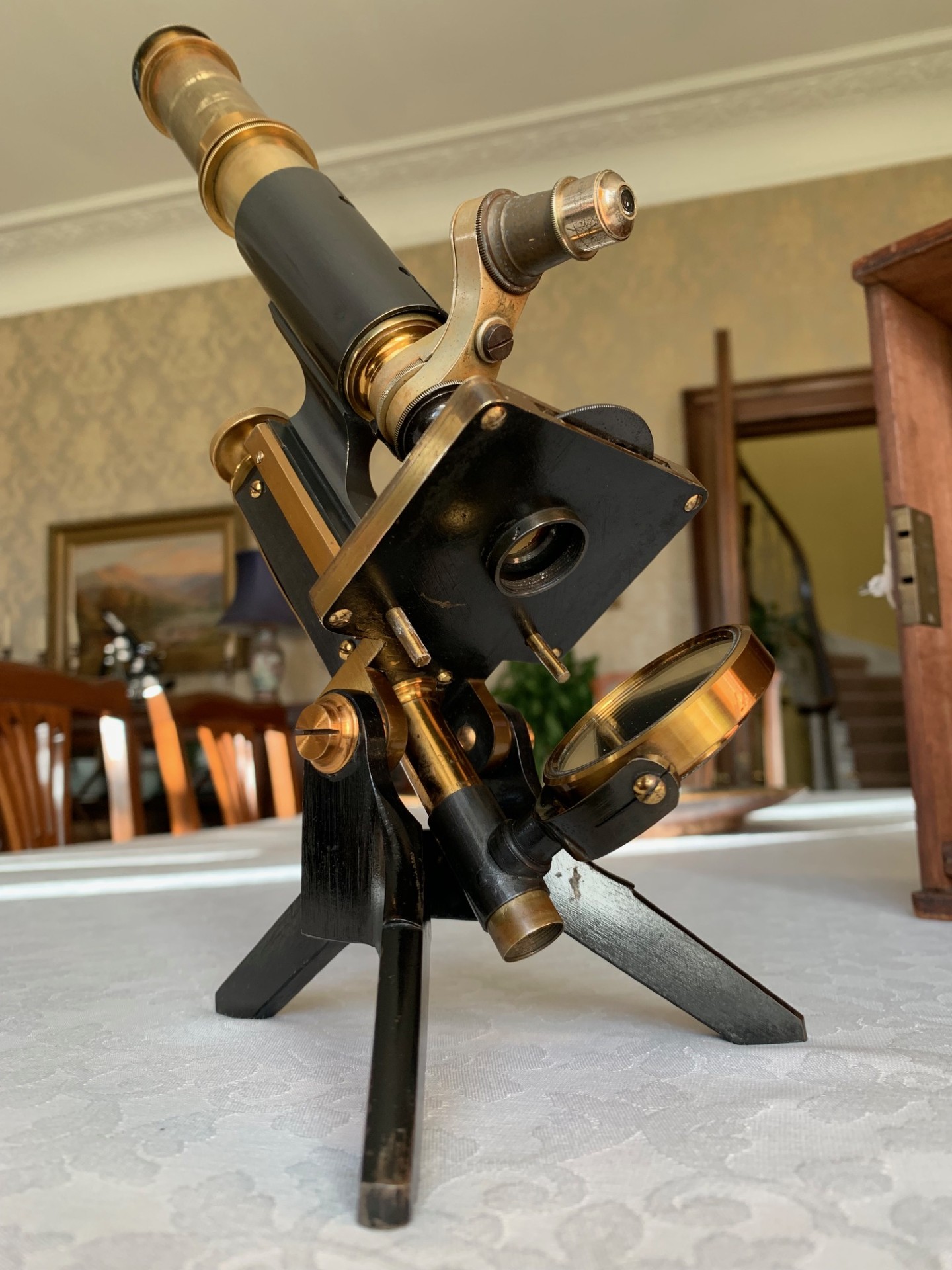Antique Compact Brass Microscope by George Mason of Glasgow – circa 1890, Cased
£225
Nice antique Victorian period example of a compact histology-type monocular brass microscope by Glasgow-based makers George Mason & Co. of Sauchiehall Street.
Circa
1890
Maker
George Mason & Co.
Country of manufacture
UK and Ireland
Description
Offered for sale we have a nice rare example of an antique monocular brass microscope by Glasgow-based optical retailers and makers George Mason & Co, with this instrument dating to around the 1890 period or thereabouts. This design of microscope also bears a trade mark emblem on the rear of the tripod. It’s certainly possible that Mason bought in some components from other manufacturers of the time, as well as producing his own components and designs.
The condition of this example is generally good, with age and use appropriate blemishes, a few very minor dents and signs of wear to the finish on the instrument and just the right time worn look to its lacquered brass-work. Being a compact instrument, it’s also a good proposition for display, say on a desk-top when set up with a suitable antique slide. It’s also perfectly usable producing some nice bright images with its current set of optics.
Background to George Mason & Co., Manufacturers of Optical, Mathematical, Chemical, Philosophical, and Photographic Instruments, 180 to 186, Sauchiehall Street, Glasgow – Source: Microscopist.net
Robert George Mason (1849 – 1912) was a professional microscope manufacturer and preparer of microscope slides during the last decades of the 19th century, continuing into the early years of the 20th. Around the year 1880, Mason quit his job with the Swift optical works and began his own business. That venture lasted until about 1900. Mason continued to produce both prepared slides and unmounted specimens until his death.
Mason’s slides were consistently well made, and included a wide variety of specimen types. Mason’s microscope manufacturing and slide making business was a small affair, with him as the only known employee. The 1891 census listed Robert Mason as being “neither employed nor employer”. Strikingly, his 15 year-old son was recorded as being “employed” as an “optician’s assistant”. If accurate, then the son was working for another optician, probably as an apprentice.
His advertisements indicated that Mason’s business began in 1880. The 1881 census listed him as then being an “unemployed optician”, suggesting that he was still working to get his business going. While he presumably produced microscopes during the 1880s, he was variously described as being a “manufacturing optician to the trade” and “a trade maker”, so he may have been primarily a maker of unlabeled microscopes that were sold by other retailers.
Mason made a big splash in 1890, with the release of a hybrid microscope that functioned as a standard table instrument and could also be connected to a light source for use as a magnifying projector. The concept was not new, but Mason’s ingenious model was constructed such that nothing needed to be disassembled for the transition – one simply swung the base out of the way and attached the condenser to a light projector. This invention won him a Silver Medal at the 1893 Exhibition of the Royal Cornwall Polytechnic Society. Despite extensive advertising and published high praises, Mason’s output appears to have been fairly small. However, London’s Museum of the History of Science has a projection microscope that was made by Mason.
For the main technical details of this Victorian period compact monocular microscope by Mason & Co, we have the following:
1) Tripod foot construction in steel with twin uprights to a pivot and single column Continental-style upright in lacquered brass finish, to which attach both stage and upper limb. This microscope is inclinable and can be tightened at the pivot point if necessary.
2) A monocular eyepiece giving around 8x magnification. The instrument also has an eyepiece draw-tube that’s graduated. The eyepiece fit is non-standard at around 26mm diameter.
3) The instrument’s main coarse focus is controlled via push-pull of the optical tube which friction-fits into its brass tube-mount. Travel and focus are adequate with some stiffness in operation but with positive feel and the optical tube holding in position as it should throughout its working range. Fine focus is via a single brass thumb-wheel atop the column, also with smooth action being freshly lubricated.
4) There’s a brass double turret which will be a later addition, together with two unbranded objective lenses, as under:
– 1 inch – 6x magnification
– 1/4 inch – 25x magnification
The objective lenses and eyepiece supplied therefore provide an effective magnification of around 50x and 200x and it’s pleasing to note the RMS fitment, so plenty of other objectives should also fit the instrument.
5) The stage is of a plain square design in brass with some signs of surface wear/patination. It’s currently fitted with a pair of brass slide clips for holding slides, which work well.
6) Integral to the stage and operated from the front of the stage there’s a wheel-of-stops with positive feel, nicely damped rotation and 5 aperture sizes available.
7) Lighting is provided by plano-concave mirror on a gimbal mount and slider attached to the limb tail-piece, with height & swing adjustment. The mirror silvering is in good condition to both sides and with reflectivity that’s perfectly adequate.
8) There is a hardwood case with the instrument that will be original, complete with a replacement carry-handle and working lock & key, which is always nice to have.
In summary, this is a very good clean example of a rare-to-market compact antique monocular microscope from the Victorian period by a quality Glasgow-based maker, that’s in good working and cosmetic condition for its age. Being from a quality Glasgow maker with limited lifetime output, it may be quite a scarce example. This instrument may therefore appeal to collectors of such instruments and also in view of its Scottish heritage it would be nice if the instrument were to stay in Scotland or go to a buyer with a Scottish connection. It may also appeal to buyers seeking a quality compact brass instrument for use and/or display. Being compact it’s also a perfect desk-top accessory, especially when set up with an appropriate antique slide – it’s working height is between about 10 and 12 inches.
For shipping, the instrument and case will be very well packed and dispatched by insured courier upon receipt of cleared funds.
Thanks for looking.
Ask the Dealer
Dealer information
 Arcboutant Scientific
Arcboutant Scientific
Arcboutant Scientific based in Glasgow Scotland, with an interest in scientific collectables dating back to 1988. Now making available carefully curated fine examples, principally of antique microscopes and associated scientific equipment by quality English and Continental makers, to collectors world-wide.




